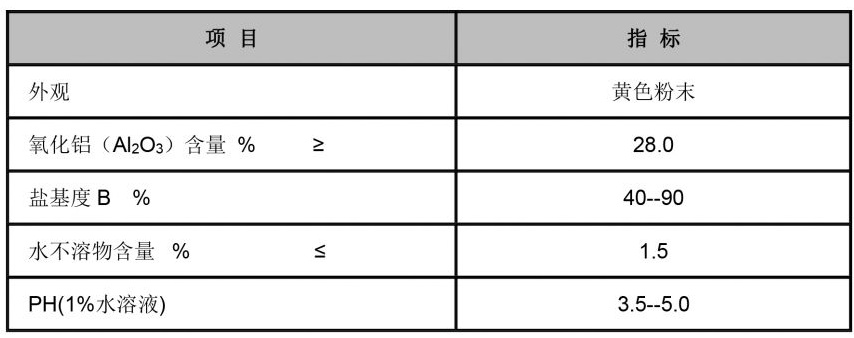polyacrylamide formation
Understanding Polyacrylamide Formation A Comprehensive Overview
Polyacrylamide (PAM) is a synthetic polymer that has gained significant attention in various industries due to its versatility and effectiveness in water treatment, soil stabilization, and as a thickening agent. The formation of polyacrylamide involves a process that is both fascinating and complex, encompassing the principles of polymer chemistry.
What is Polyacrylamide?
Polyacrylamide is a polymer derived from acrylamide monomers. It is characterized by its ability to form a gel-like substance when mixed with water. The structure of PAM consists of repeating units of the acrylamide monomer, which can be modified to achieve desired characteristics for specific applications. The physical properties of PAM can vary significantly depending on the degree of polymerization and the presence of additional functional groups.
The Formation Process
The formation of polyacrylamide occurs through a process known as polymerization, where individual monomer units are chemically bonded to form long chains. There are two primary types of polymerization used to synthesize PAM free radical polymerization and ionic polymerization.
1. Free Radical Polymerization This is the most common method for producing polyacrylamide. It involves the use of a free radical initiator, which generates reactive species that start the chain reaction. Typically, an initiator like potassium persulfate is used, which decomposes to produce free radicals. When acrylamide is mixed with this initiator and allowed to react under controlled conditions (such as temperature and pH), polymerization occurs, resulting in high molecular weight polyacrylamide.
2. Ionic Polymerization This method often yields polymers with specific properties and is less commonly used for PAM. In ionic polymerization, initiators that produce cations or anions are employed. This method allows for better control over the polymer's structure but is more sensitive to reaction conditions.
Factors Affecting Polymer Formation
Several factors affect the formation and properties of polyacrylamide
- Concentration of Monomers The concentration of acrylamide directly influences the molecular weight of the resulting PAM
. Higher concentrations lead to longer polymer chains, enhancing its effectiveness in various applications.polyacrylamide formation

- Temperature The temperature at which polymerization occurs can significantly impact the reaction rate and the final properties of the polymer. Higher temperatures generally increase the reaction rate but may also lead to unwanted side reactions.
- pH Level The pH of the reaction medium can affect the ionization of acrylamide and the efficiency of the initiator, thereby influencing the polymerization process.
- Presence of Additives Various additives, such as cross-linking agents, can be introduced during the polymerization to modify the properties of the resulting PAM, such as its viscosity and solubility.
Applications of Polyacrylamide
Polyacrylamide boasts a wide array of applications across different sectors
- Water Treatment PAM is extensively used in water purification processes. It acts as a flocculant, helping to aggregate suspended particles, which can then be removed from water more efficiently.
- Soil Stabilization In agriculture, PAM is used to improve soil structure, helping to reduce erosion and increase water retention, thus enhancing crop yields.
- Oil Recovery In the oil and gas industry, PAM is used in enhanced oil recovery processes. Its ability to increase the viscosity of water helps in mobilizing oil trapped in reservoir rocks.
- Cosmetic Industry PAM is also utilized in cosmetics as a thickening agent, providing desirable textures and improving the stability of cosmetic formulations.
Conclusion
The formation of polyacrylamide is a critical process that combines elements of science and engineering. By understanding the intricacies of polymerization, researchers and manufacturers can tailor PAM for specific applications, making it a valuable polymer in various fields. As industries continue to innovate and seek more efficient materials, the significance of polyacrylamide is likely to grow, further underscoring its role in modern technology and environmental management. As we advance, ongoing research and development will optimize its use, ensuring that polyacrylamide remains an essential component in the materials landscape.
-
Dodecyldimethylbenzylammonium Chloride: High-Purity DisinfectantNewsAug.30,2025
-
2-Phosphonobutane-1,2,4-Tricarboxylic Acid: Scale & CorrosionNewsAug.29,2025
-
Premium Isothiazolinones | Broad-Spectrum Biocidal SolutionsNewsAug.28,2025
-
LK-319 Special Scale And Corrosion Inhibitor For Steel Plants: Advanced Solutions for Industrial Water SystemsNewsAug.22,2025
-
Flocculant Water Treatment: Essential Chemical Solutions for Purification ProcessesNewsAug.22,2025
-
Isothiazolinones: Versatile Microbial Control Agents for Industrial and Consumer ApplicationsNewsAug.22,2025





